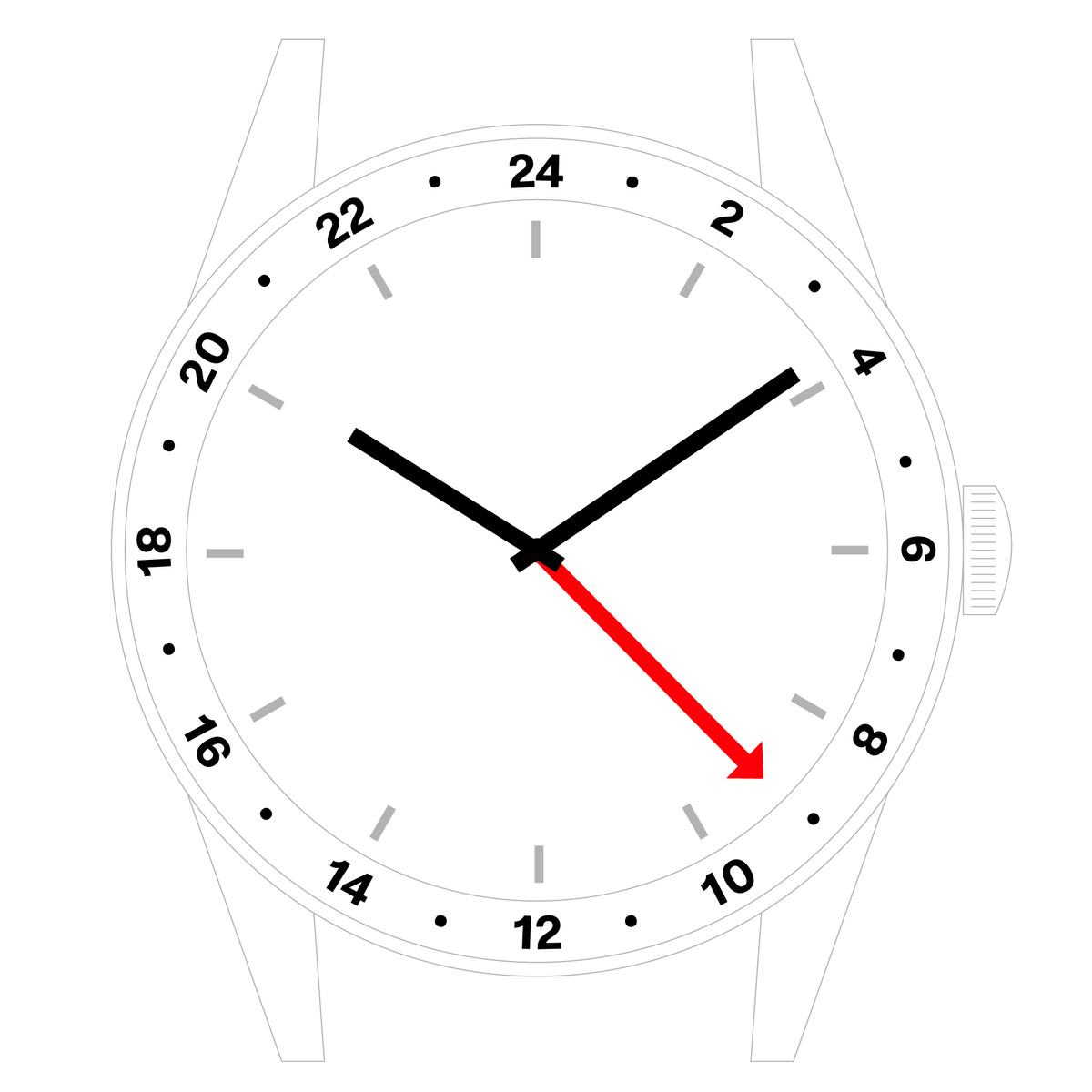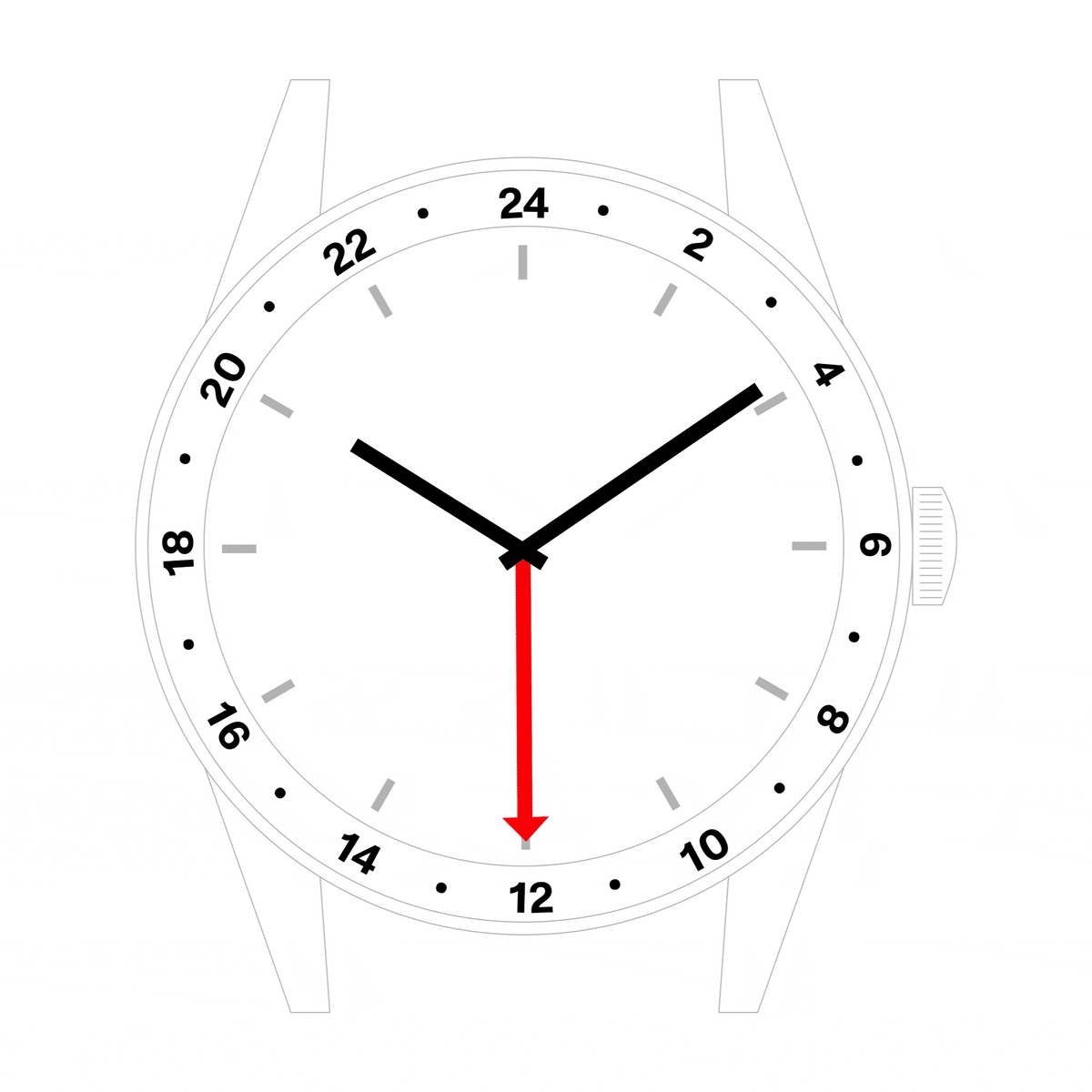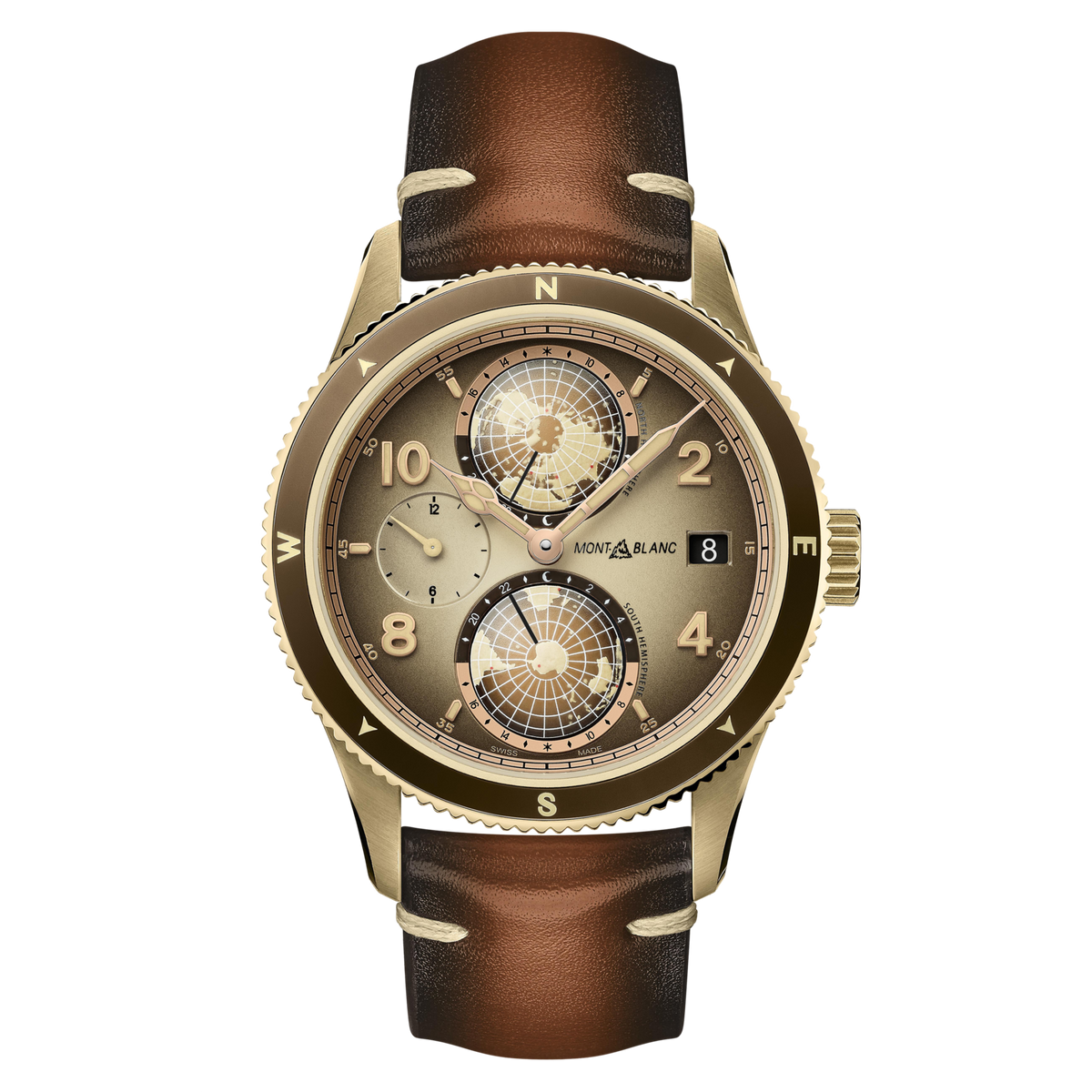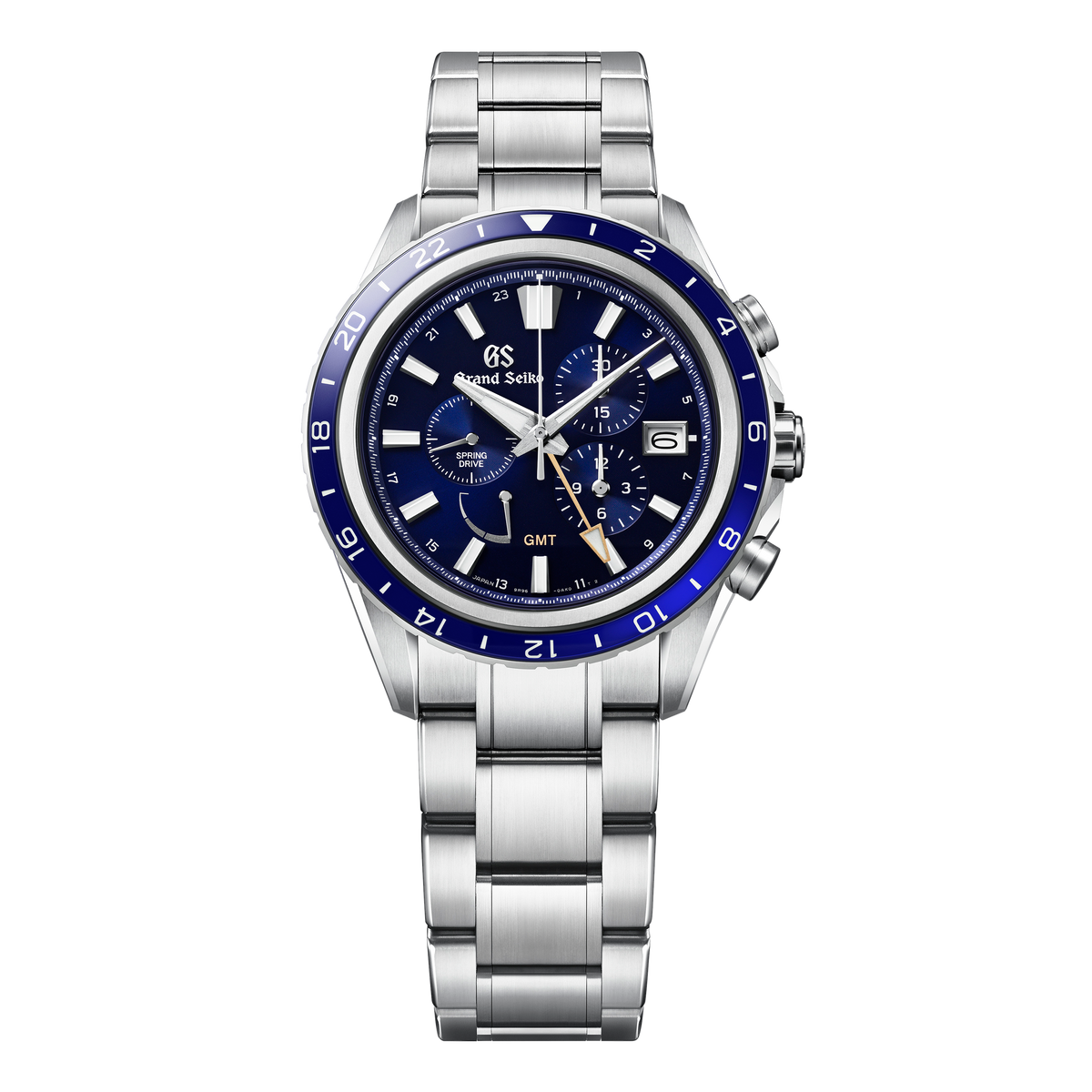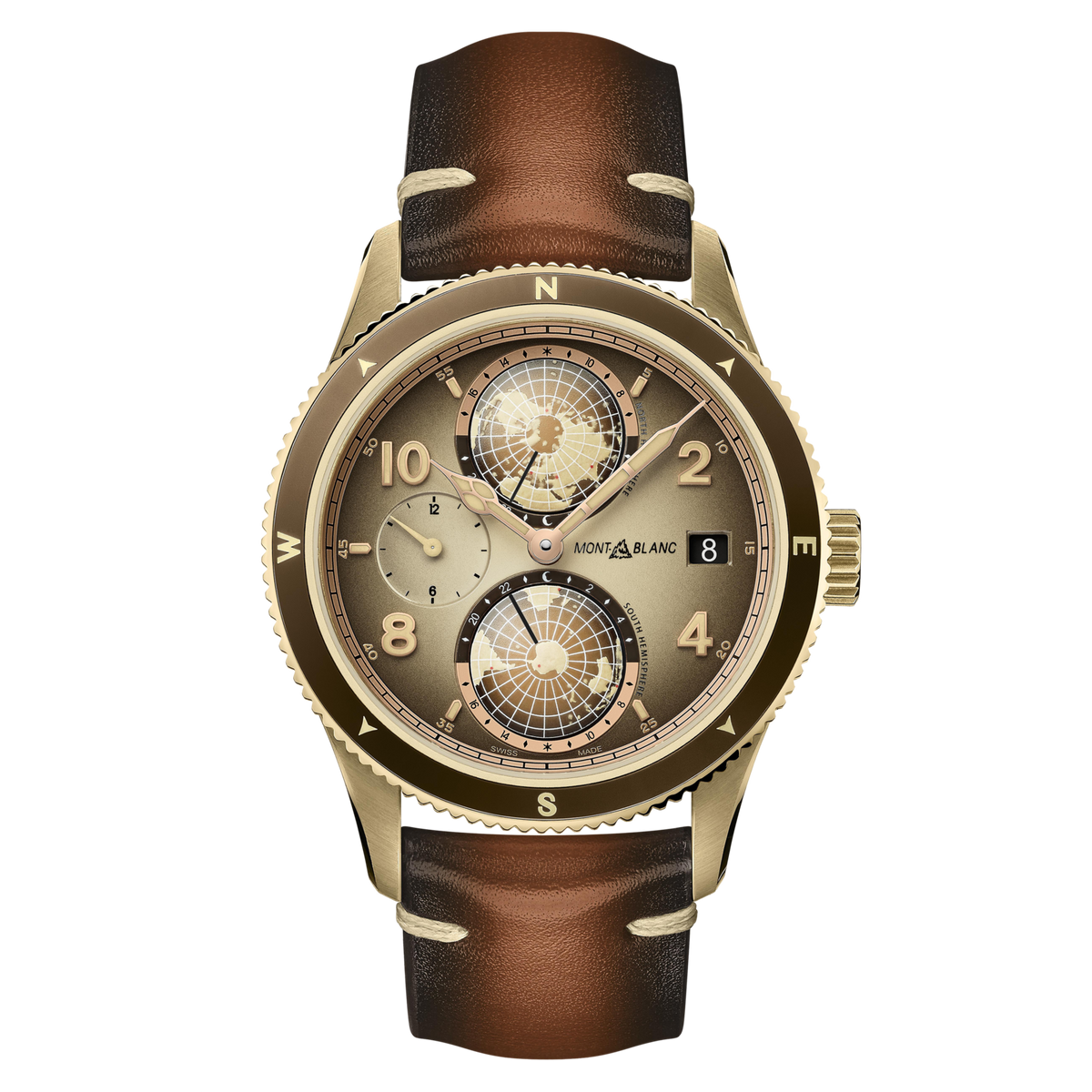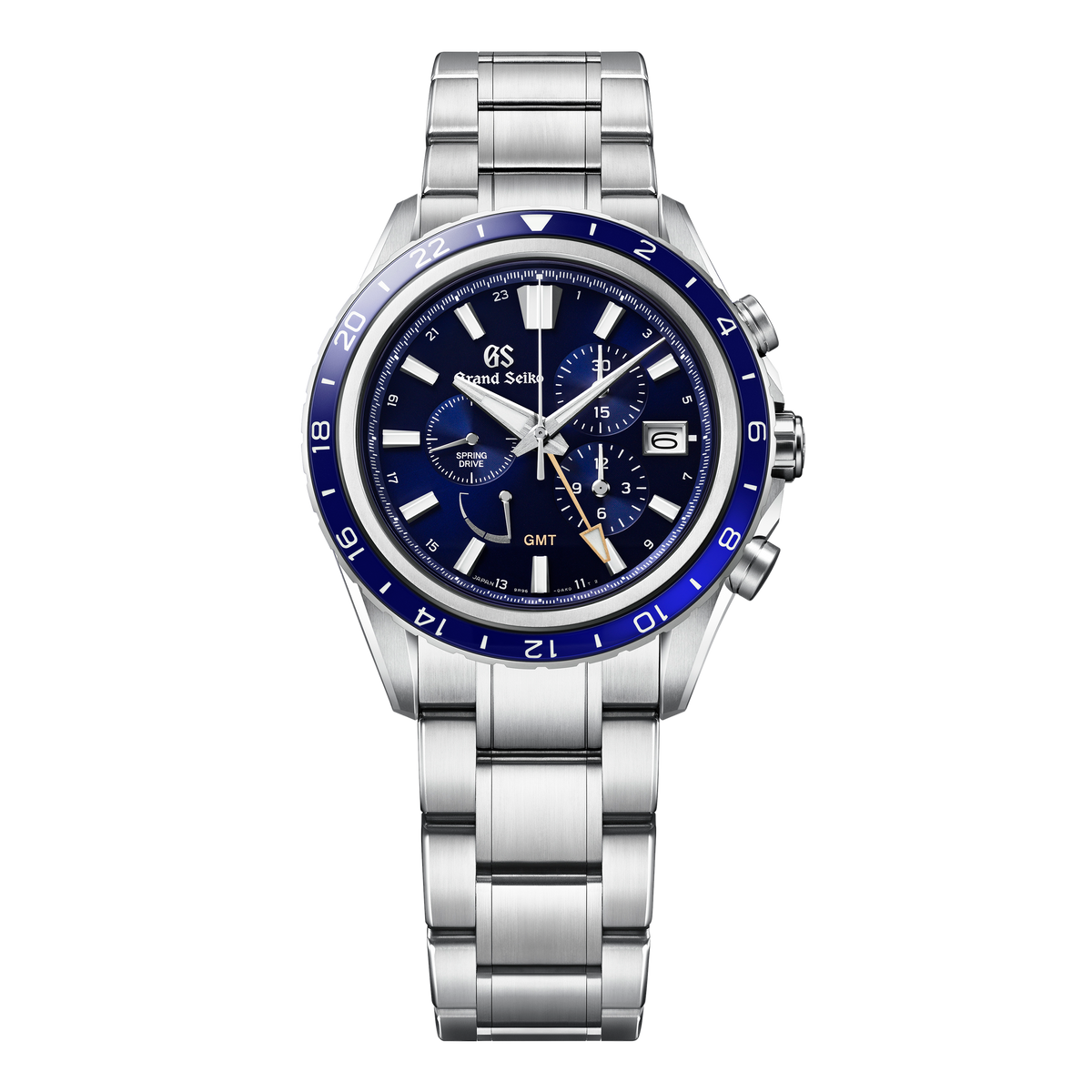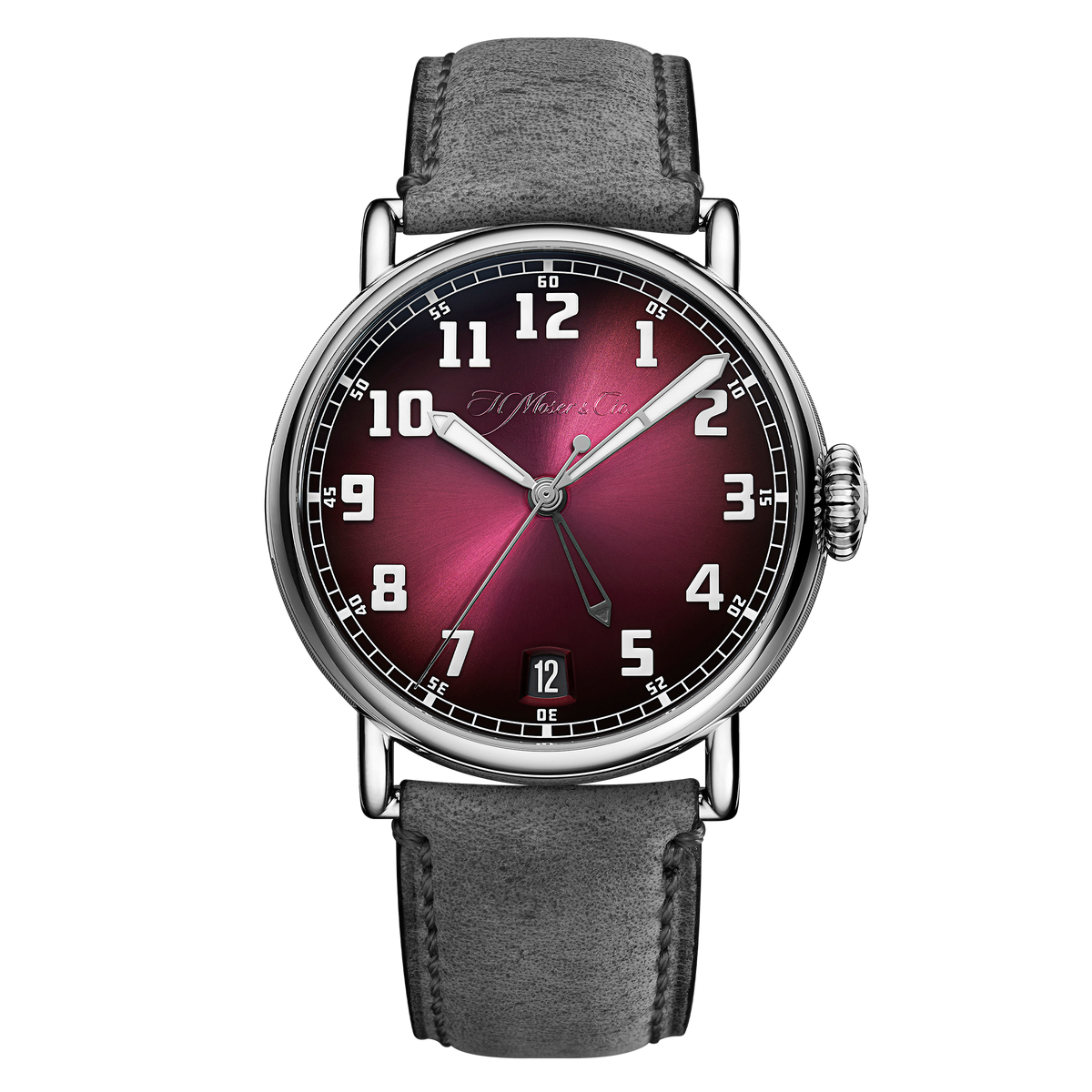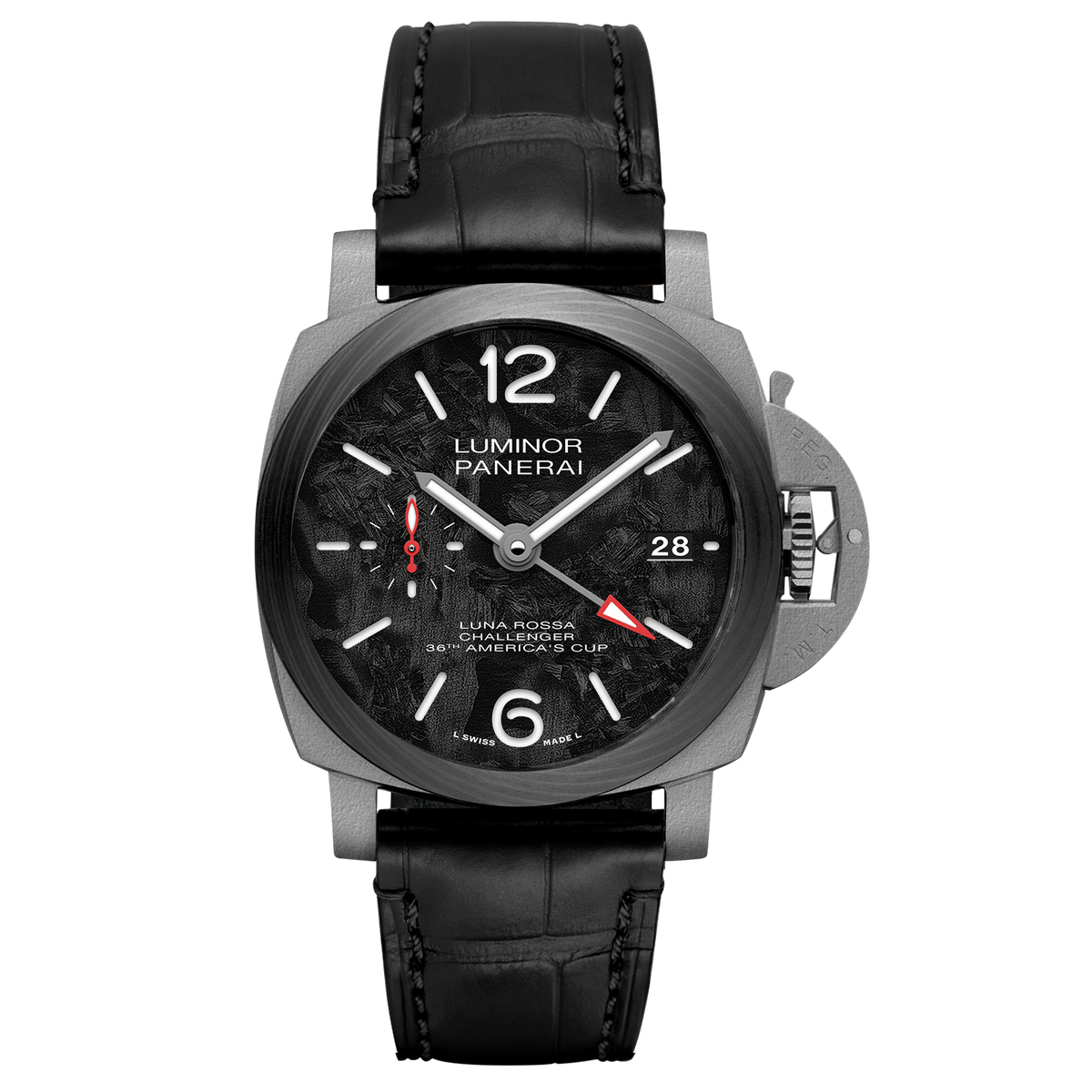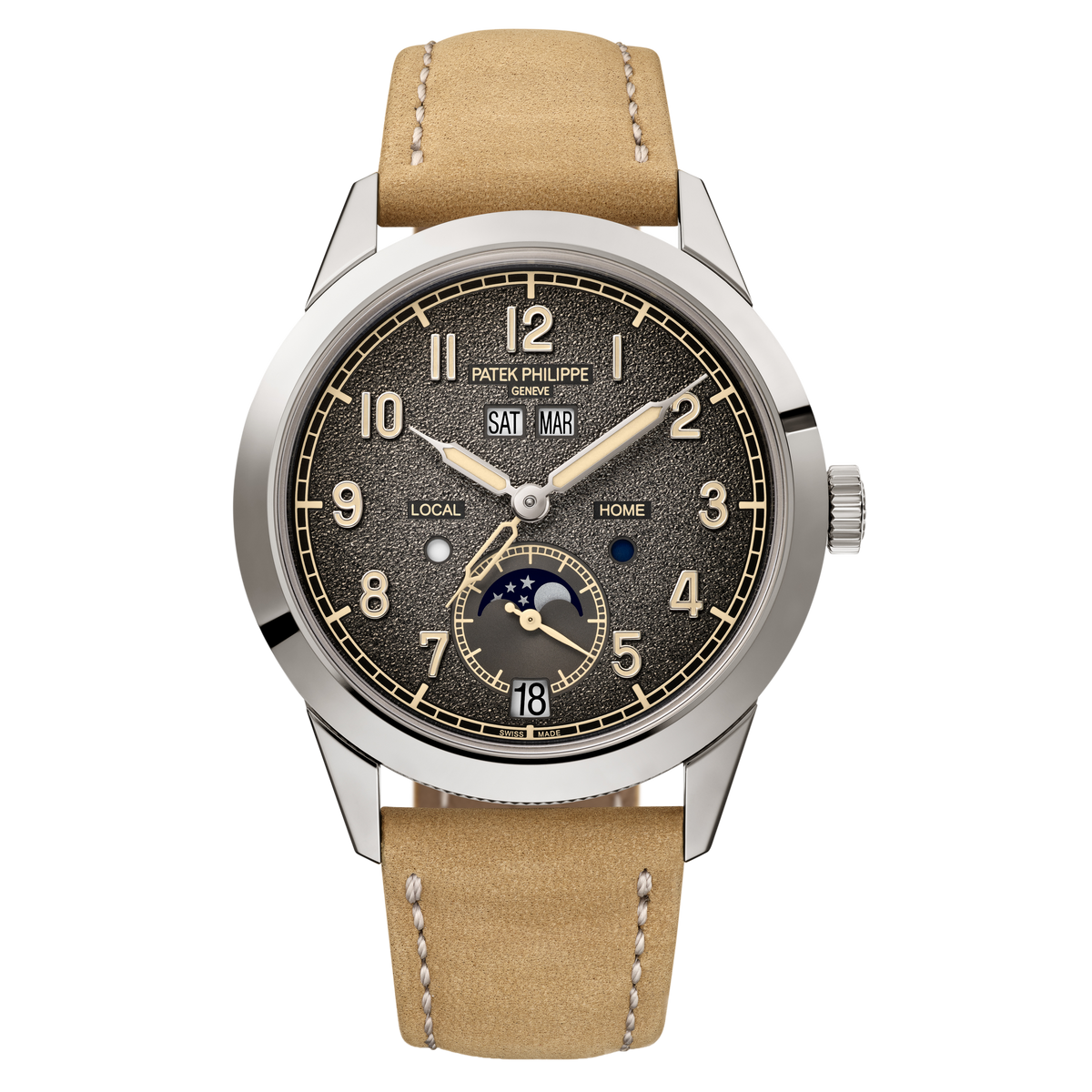Launched in 1940, Universal's Aéro-Compax was the first chronograph to be made for pilots, specifically Brazilian pilots. In addition to 30-minute and 12-hour counters, it features a subdial at 12 o'clock with hour and minute hands that could be set, by means of a crown at 9 o'clock, to a reference time (such as the start time of a mission). The hands on this subdial weren't connected to the movement, hence didn't move.
In 1954 Rolex introduced the GMT-Master which prefigured all future GMT watches. Developed in partnership with Pan American Airways (better known as Pan Am), it has a second central hour hand that makes one rotation in 24 hours. An arrow tip points to a 24-hour scale on the bezel. The other hour hand can be separately adjusted, thanks to a clutch.
Subsequently, a multitude of brands would roll out their own dual-time or multiple time zone watches. Heuer presented the Twin-Time in 1955 along the same lines as the GMT-Master but with a second hour hand that rotated over 12 hours. Omega launched the Flightmaster, the first chronograph with a GMT hand, in 1969. Rolex reissued its historic dual-time in 1982 as the GMT-Master II. And in 1994 Ulysse Nardin became the first to use two pushers to move the hour hand forwards or backwards in one-hour jumps on the GMT +/-.
Since 1972 GMT has been replaced by UTC (Coordinated Universal Time) which is based on international atomic time. Even so, watchmakers continue to refer to their dual-time watches as GMT.
